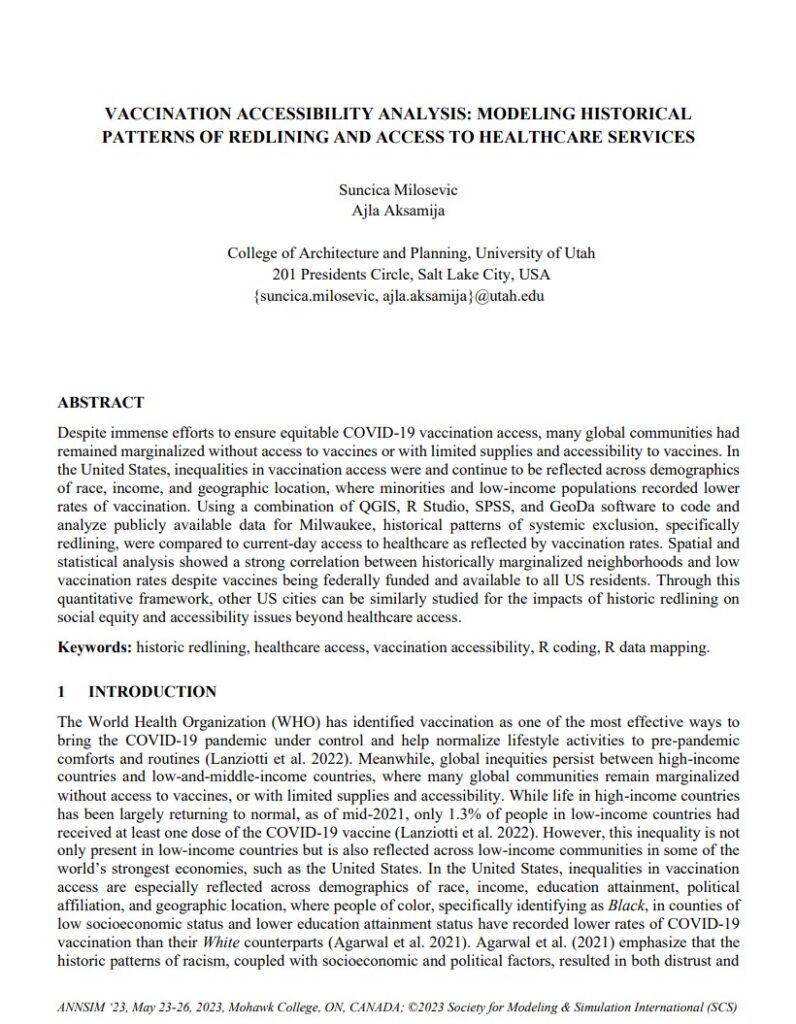
“Vaccination Accessibility Analysis: Modeling Historical Patterns of Redlining and Access to Healthcare Services” discusses relationships between historic urban planning policies and access to healthcare, specifically vaccination accessibility. Despite immense efforts to ensure equitable COVID-19 vaccination access, many global communities had remained marginalized without access to vaccines or with limited supplies and accessibility to vaccines. In the United States, inequalities in vaccination access were and continue to be reflected across demographics of race, income, and geographic location, where minorities and low-income populations recorded lower rates of vaccination. Using a combination of QGIS, R Studio, SPSS, and GeoDa software to code and analyze publicly available data for Milwaukee, historical patterns of systemic exclusion, specifically redlining, were compared to current-day access to healthcare as reflected by vaccination rates. Spatial and statistical analysis showed a strong correlation between historically marginalized neighborhoods and low vaccination rates despite vaccines being federally funded and available to all U.S. residents. Through this quantitative framework, other U.S. cities can be similarly studied for the impacts of historic redlining on social equity and accessibility issues beyond healthcare access.
Citation:
Milosevic, S., and Aksamija, A., (2023). “Vaccination Accessibility Analysis: Modeling Historical Patterns of Redlining and Access to Healthcare Services”, Proceedings of the Symposium on Simulation for Architecture and Urban Design (SimAUD) 2023, The Society for Modeling and Simulation International, Ontario, Canada, May 23-26, pp. 448-461.
